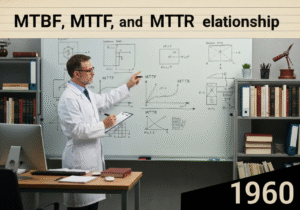To calculate a worker’s exposure to hand-arm vibration.
- المنهجيات: العملاء والتسويق, الأفكار, تصميم المنتج
حاسبة الاهتزاز باليد والذراع (HAV)

حاسبة الاهتزاز باليد والذراع (HAV)
- الأثر البيئي, بيئة العمل, العلوم الصحية, العوامل البشرية, هندسة العوامل البشرية (HFE), إدارة المخاطر, أمان, تحليل الاهتزازات
الهدف:
كيفية استخدامه:
- A tool that calculates a worker's daily exposure to vibration from power tools and other equipment. It is used to ensure that exposure levels are within safe limits and to identify workers who are at risk of hand-arm vibration syndrome (HAVS).
الايجابيات
- Helps to protect workers from the health risks of vibration; Provides a quantitative measure of exposure.
سلبيات
- Requires accurate data on vibration levels and exposure times; Can be complex to use.
الفئات:
- بيئة العمل, إدارة المخاطر
الأفضل لـ
- Assessing the risk of hand-arm vibration syndrome for workers who use power tools.
The Hand-Arm Vibration Calculator (HAV) serves as an important tool in industries such as construction, manufacturing, and forestry, where workers frequently use vibration-inducing hand tools like drills, grinders, and saws. This methodology is particularly valuable during the planning and assessment phases of workplace safety programs, allowing managers and safety officers to evaluate existing equipment and practices while implementing new strategies to mitigate risks associated with vibration exposure. Organizations can benefit from the HAV calculator by quantitatively measuring and tracking vibration exposure over time, which aids in compliance with regulations set forth by occupational safety institutions such as the Health and Safety Executive (HSE) in the UK or the Occupational Safety and Health Administration (OSHA) in the US. Employees using vibrating tools should be educated about the risks and safe usage practices, while regular monitoring of exposure levels can lead to proactive interventions, such as limiting tool usage duration or introducing alternative tools designed with lower vibration levels. Involvement of occupational health professionals, ergonomists, and safety engineers during the analysis phase is advisable, as they can interpret the data and recommend appropriate personal protective equipment (PPE) or ergonomic improvements. Implementing such measures not only safeguards worker health but can also result in increased productivity and morale, reducing costs associated with worker compensation claims and lost workdays due to HAVS.
الخطوات الرئيسية لهذه المنهجية
- Identify the tools and equipment used by the worker.
- Gather vibration emission data from manufacturer specifications or reliable databases relevant to each tool.
- Measure the duration of exposure for each tool during the workday.
- Calculate the daily vibration exposure using the acquired vibration data and exposure time.
- Compare calculated exposure values against established exposure limits (e.g., from ISO 5349).
- Determine the risk for each worker based on their calculated exposure and the threshold limit value.
- Implement control measures or recommendations for reducing vibration exposure if thresholds are exceeded.
نصائح للمحترفين
- Integrate real-time exposure monitoring to capture instantaneous vibration levels during tool use, allowing for more precise data analysis and proactive risk management.
- Utilize a multi-layered approach when assessing HAV risk, incorporating ergonomic evaluations and staff feedback to identify tools and tasks with high vibration exposure.
- Regularly calibrate measurement devices and cross-check data against industry standards to ensure compliance and enhance the accuracy of HAV assessments.
لقراءة عدة منهجيات ومقارنتها, نوصي باستخدام
> مستودع المنهجيات الشامل <
مع أكثر من 400 منهجية أخرى.
نرحب بتعليقاتكم على هذه المنهجية أو المعلومات الإضافية على قسم التعليقات أدناه ↓، وكذلك أي أفكار أو روابط متعلقة بالهندسة.
السياق التاريخي
1959-11
1960
1960
1960
1961
1968
1974-11-15
1950
1960
1960
1960
1960
1963
1970
1980
(إذا كان التاريخ غير معروف أو غير ذي صلة، على سبيل المثال "ميكانيكا الموائع"، يتم تقديم تقدير تقريبي لظهوره الملحوظ)














منشورات ذات صلة
محاكاة مونت كارلو
الاختبار المستند إلى النموذج
التحقق من النموذج
بحوث الأساليب المختلطة
تدقيق الأخطاء (بوكا يوك)
اختبار الملف الشخصي للمهمة